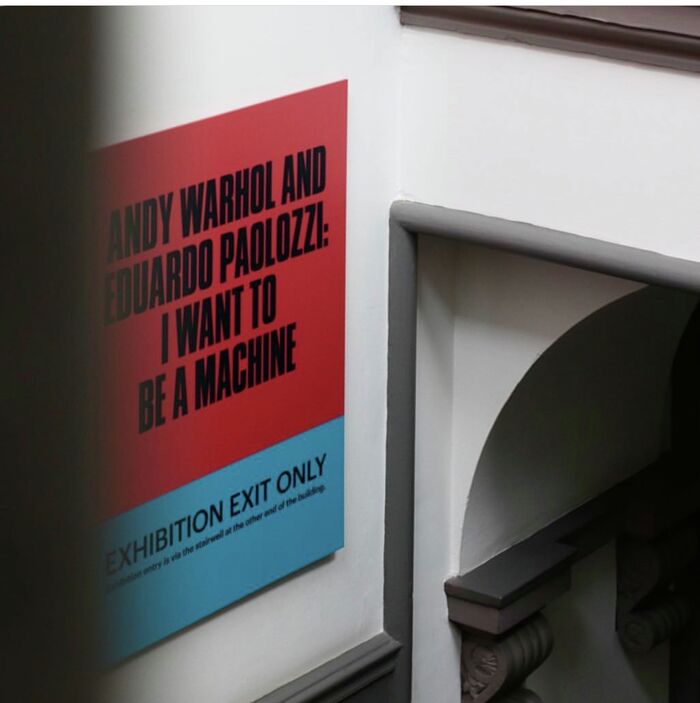Oscar Murillo: Violent Amnesia
Esmee Wright talks to Andrew Nairne, Director of Kettle’s Yard about their new exhibition with Oscar Murillo, Turner Prize nominee

Andrew Nairne, director of Kettle’s Yard, very much gave the impression in our conversation that the Oscar Murillo exhibition was a bit of a big thing for the gallery. As I write this article, Murillo has just been announced as one of the four artists shortlisted for the 2019 Turner Prize award; it seems safe to say that Nairne wasn’t exaggerating.
It isn’t often that you get to walk around inside a Turner Prize-nominated exhibition, but Violent Amnesia would be memorable even if it had flown under the radar of the rest of the art world. Amnesia is nowadays understood to often be the result of a traumatic event; here it would be well interpreted as a reference to the ‘forgetting’ of colonial atrocities committed by the West. Violent Amnesia, which gives the exhibition its name, is shown on one wall of the Sackler Gallery, although Murillo has nailed loose canvas over the Sackler name. The piece hangs, banner-like, covered in black paint, prints of birds, and the continents of the world painted upside down in vibrant red. Forgotten from this picture of Earth are North America and Europe – home of those most likely to forget about the rest of the world.
"The smell of paint lingers in the air"
The room is strewn with stiff sheets of material that have been flung at the wall and left a pattern of dark waves. Murillo came up with this as he set up a piece in a gallery in Shanghai; his work is constantly evolving and a piece may change even as it is being installed. At Kettle’s Yard the smell of paint lingers in the air.
There is one canvas in the room which particularly grabs attention. Although much of Murillo’s work uses dark tones, Surge has a bright orange background and a large blue wave across it, the paint so thick it's three dimensional. There is another, smaller painting in the lobby, the only piece in the exhibition not created by Murillo. Nairne had noted Surge’s similarity to another piece in the house, an Alfred Wallis painting done on cardboard and titled French Lugsail fishing boat. Delighted by the reference, Murillo incorporated it into Violent Amnesia.

Gallery 2 houses five traditionally-stretched canvases, part of a series called Catalyst. Murillo created these by vigorously applying paint with a brush handle to the loose canvas laid on the floor. This technique, which gives Murillo little control over the final image, echoes surrealist automatism. Julie Mehretu, who was exhibited in Kettle’s Yard a couple of months ago, did something similar: in her reversed prints, as in Murillo’s work, it is up to the viewer to decide whether what they are looking at is actually art, and, indeed, what it is that they are looking at. Murillo pushes these boundaries of contemporary art yet further: he juxtaposes these pieces, recognised as art in the contemporary world because of their stretched canvas, with the large shredded ‘banner canvas’ opposite.
"It is up to the viewer to decide whether what they are looking at is actually art"
There are pews in the centre of the gallery which have been hacked at with an axe, and scattered with cornbread. The significance of this is explained at Saint Peter’s Church, where dummies representing from Murillo’s childhood home are sat on the pews, impaled by air conditioning units filled with more cornbread. Murillo grew up in a small Colombian village, utterly reliant on the sugar factory (and its air conditioning units) for a living, and breadmaking for solace. Initially Murillo used bread imported from the village, but when it began to go off he combined it with clay; in doing so he sacrificed its utility to make it more like ‘art.’
The itinerancy of human experience is a clear thread running throughout Murillo’s work, even stretching to his drawings in the Kettle’s Yard house itself. He made these sketches while on a plane, flying above man-made borders and passport controls as untroubled as a bird. In the Edlis Neeson Research Space upstairs, My name is Belessario is playing. A spoken word piece recorded in Spanish by Murillo’s father and translated into the languages most commonly spoken in Cambridge, it tracks the family’s journey from Colombia to the UK. There is a clear disjunction between the ease of travel now experienced by Murillo and the birds which feature in his work, and the many hardships his father went through in order to come to the UK.
Violent Amnesia is greatly focused on the discourse that surrounds the argument of who is, and who isn’t, allowed to cross borders. In Murillo’s work there is a similar pushing at the boundaries, this time of what may and may not be considered art, and how to relate to it. The mixture of stretched and unstretched canvases, and the unusual placing of pieces question where art is meant to be, and indeed allowed to be. More than anything, the names of the artworks alone suggest a desire on Murillo’s part that his art could, however unlikely it maybe, bring about a reconciliation between the travellers of the world and the amnesia of those around them.
 News / Eight Cambridge researchers awarded €17m in ERC research grants27 December 2025
News / Eight Cambridge researchers awarded €17m in ERC research grants27 December 2025 News / Downing investigates ‘mysterious’ underground burial vault 29 December 2025
News / Downing investigates ‘mysterious’ underground burial vault 29 December 2025 Lifestyle / Ask Auntie Alice29 December 2025
Lifestyle / Ask Auntie Alice29 December 2025 Sport / Hard work, heartbreak and hope: international gymnast Maddie Marshall’s journey 29 December 2025
Sport / Hard work, heartbreak and hope: international gymnast Maddie Marshall’s journey 29 December 2025 Interviews / Meet Juan Michel, Cambridge’s multilingual musician29 December 2025
Interviews / Meet Juan Michel, Cambridge’s multilingual musician29 December 2025










